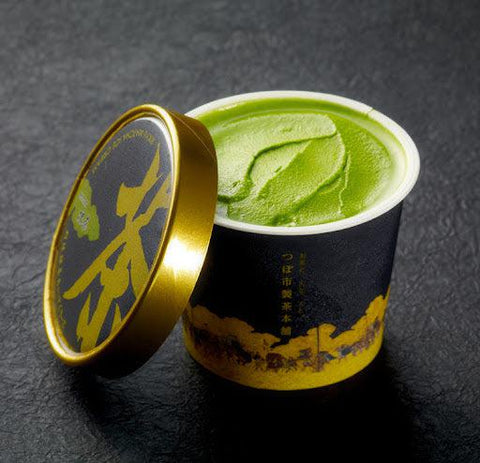
Jump to:
Matcha tea is a common and versatile ingredient used in Japanese desserts including cakes, puddings, ice cream, and mochi. You can also use matcha to add flavor to baked goods such as cookies, muffins, and brownies, and it also works well as a topping for fruits such as bananas or strawberries or in healthy smoothie mixes and milkshakes. Read on to discover more about popular matcha sweets you can buy in Japan or try making yourself at home!
What is matcha tea and how is it used in desserts?
Matcha tea has been a staple in Japan for centuries. It is not only enjoyed as an everyday beverage but is also consumed on special occasions such as Japanese tea ceremonies. Matcha tea also has many health benefits and is well recognized by various medical organizations such as the World Health Organization (WHO).
Some of the health benefits of matcha green tea include reducing cholesterol, improving blood flow, increasing brain activity and metabolism. Green tea is also full of antioxidants which help to fight cancer, and it contains vitamin E which is good for the skin.
Matcha’s history dates back approximately 1,200 years to when it was first imported to Japan from China by Buddhist monks who developed the practice of drinking it daily to support their spiritual and mental health. It also helped the monks to stay awake during long periods of meditation.
It is important to note that there are several different kinds of green tea that are popular in Japan such as sencha and gyokuro, and not all green tea is the same as matcha.
Matcha is a powdered green tea that has been ground from the leaf and is grown in the shade, resulting in a more bitter flavor. It is often served with wagashi (Japanese confectionery), as the bitterness provides a good balance when paired with sweet tasting foods. The highest quality matcha is what you’ll find in Japanese tea ceremonies, whilst lesser grade matcha is usually used for baking or to add flavor to desserts or lattes. The most famous matcha comes from Uji in Kyoto.
Matcha cookies
One of the most popular sweet products featuring powdered green tea are matcha cookies. You can try making your own matcha cookies by adding a couple or tablespoons of matcha powder to your cookie dough mixture. Popular recipes for matcha cookies often recommend adding white chocolate chips which bring an extra sweetness to the cookie to help balance out the bitterness from the matcha, but you can also make them without.

If you don’t feel like making your own cookies and would prefer an instant matcha fix, then there are plenty of delicious matcha flavored cookies available to purchase that are produced by some of Japan’s leading confectionary brands. For example, chocolate manufacturer Meiji sell a Matcha sandwich biscuit featuring dark chocolate with a thick matcha cream filling. If you are looking for something a little more special, Itohkyuemon Matcha Butter Sand Cookies are made using the highest quality matcha green tea from Uji, a city on the outskirts of Kyoto.
Matcha cake
Throughout cafes and patisseries in Japan, you can find an amazing choice of matcha flavored cakes to try, with their vivid green colors helping to create an elegant selection of desserts with a wow factor. You can try making your own matcha cake at home by adding the green tea powder to your recipe or buying a premade matcha cake sold by Japanese manufacturers like Muji.

Popular types of matcha cakes include matcha castella, matcha roll cake, and matcha mille crepe cake. Japanese castella cake originated in Nagasaki where it was first imported by Spanish and Portuguese merchants during the 16th century. The sponge cake was first introduced as "bread of Castilla", a Spanish kingdom at the time. It is a rectangular shaped sponge cake similar to Madeira cake and considered a classic Japanese traditional dessert or wagashi.
Roll cakes are the Japanese take on Swiss rolls, a light and fluffy sponge cake filled with whipped cream and sometimes also include other fillings such as sweet red beans or fresh fruit. Matcha mille crepe cake is a Japanese take on the classic French dessert which consists of 10-12 layers of thin green tea pancakes filled with whipped cream in between the layers.
Matcha ice cream
Matcha ice cream is one of the most common flavors of ice cream in Japan and is often called matcha aisu in Japanese. According to the Japanese Ice Cream Association, matcha is the third most popular flavor of ice cream among Japanese consumers. Although green tea flavored shaved ice has long been a popular dessert in Japan, matcha ice cream only really became widely sold since the 1990s and today even international companies Häagen-Dazs produce a matcha ice cream.

The Häagen-Dazs matcha ice cream was the company’s first flavor exclusive to Japan and can be purchased everywhere from convenience stores to supermarkets. If you are not able to find matcha ice cream in your hometown, you can also try making your own using the following ingredients: matcha powder, milk, cream, sugar, and salt.
Matcha mochi
Mochi is an ancient Japanese dessert made of rice flour called mochigome. Many kinds of traditional Japanese sweets are made from mochi such as daifuku, a round mochi with sweet fillings such as red bean paste, white bean paste, or strawberries. Matcha daifuku is a very popular kind of Japanese sweet treat. The matcha can be either be added to the mochi dough to form part of the daifuku’s outer layer, or it can be included as part of a creamy ganache filling inside the daifuku with a whole strawberry inside to create a balance between bitter and sweet.

Matcha Warabi Mochi
Another Japanese confection similar to mochi but made from warabiko (bracken starch) and normally covered or dipped in kinako (roasted soybean flour). The deliciously chewy, jelly-like mochi can also be covered with bitter matcha powder and drizzled with kuromitsu or matcha sauce.

Matcha Kakigori Shaved Ice
In addition to the above kinds of matcha desserts, there are plenty of other matcha sweet treats you can try. For example, one of Japan’s most popular traditional summer desserts is matcha shaved ice, known as kakigori in Japanese. Consumption of kakigori in Japan dates all the way back to the Heian period (794-1185), and there is even a kakigori day celebrated each year on July 25th! Matcha kakigori is shaved ice covered in green tea syrup, and often also includes condensed milk to sweeten the taste and topped with anko (sweet red beans).

Matcha pancakes
Japanese souffle pancakes are another dessert where matcha powder is often added to make matcha pancakes. Unlike French crepes or western style flat pancakes, Japanese pancakes are thick and fluffy, made from egg whites that have been beaten into stiff peaks before being carefully added to the batter. Matcha powder can be added to the pancake batter or just sprinkled on top of the pancakes to give this popular dessert an extra boost of flavor.

Healthy matcha desserts
Although it’s always nice to indulge in a decadent dessert or two, matcha powder can be used to create healthy versions of your favorite desserts or vegan variations. For example, matcha can be used to make gluten-free matcha muffins, banana and matcha smoothies, and low-fat brownies. Just remember that it’s better to choose a high-quality matcha powder to use with your baking to bring out the best possible flavor.


0 comments